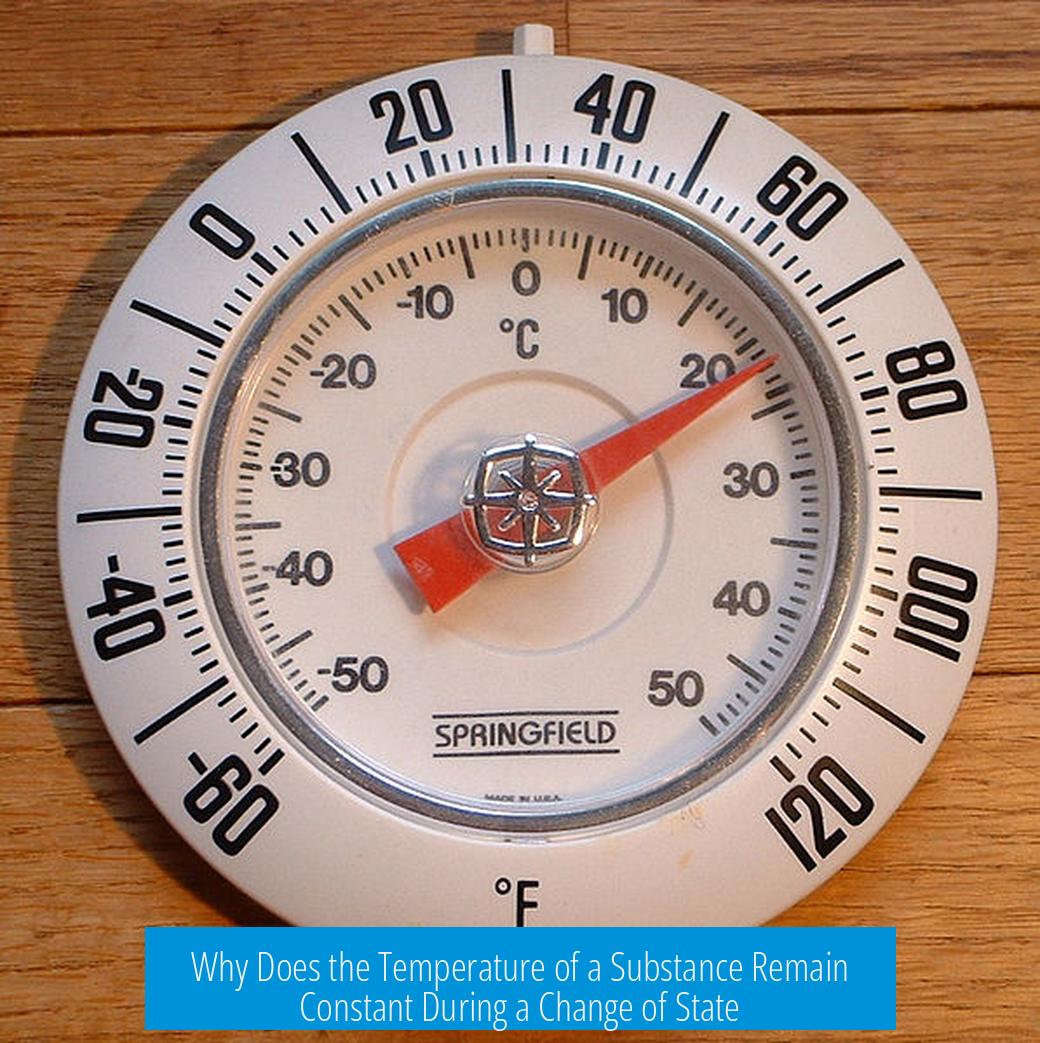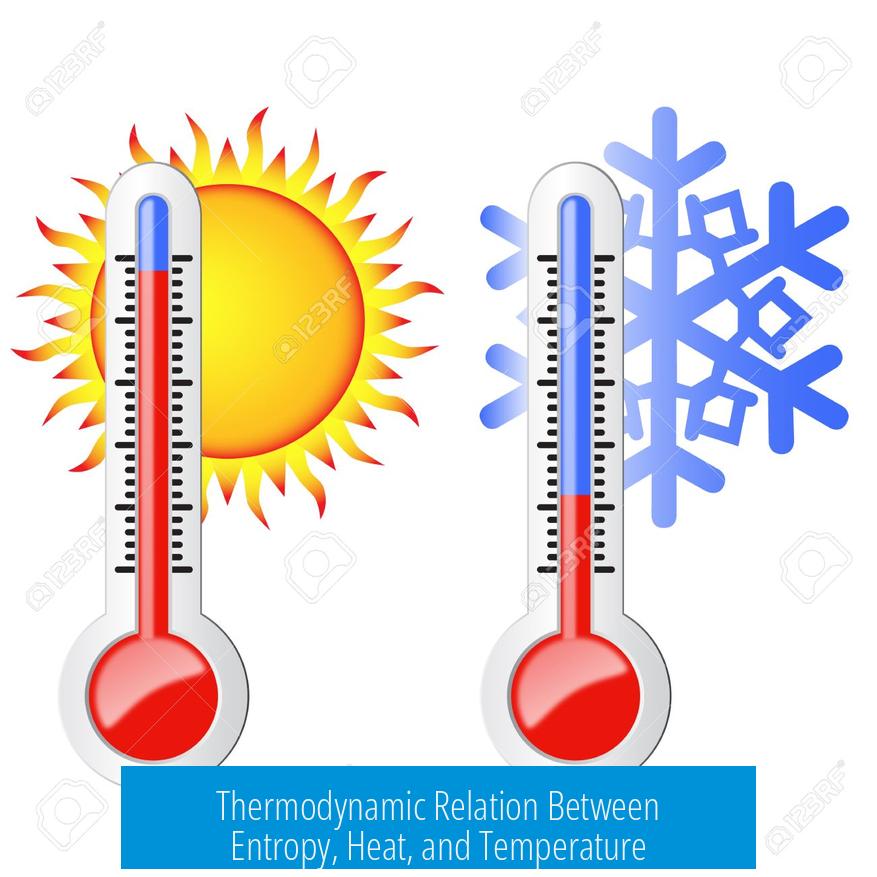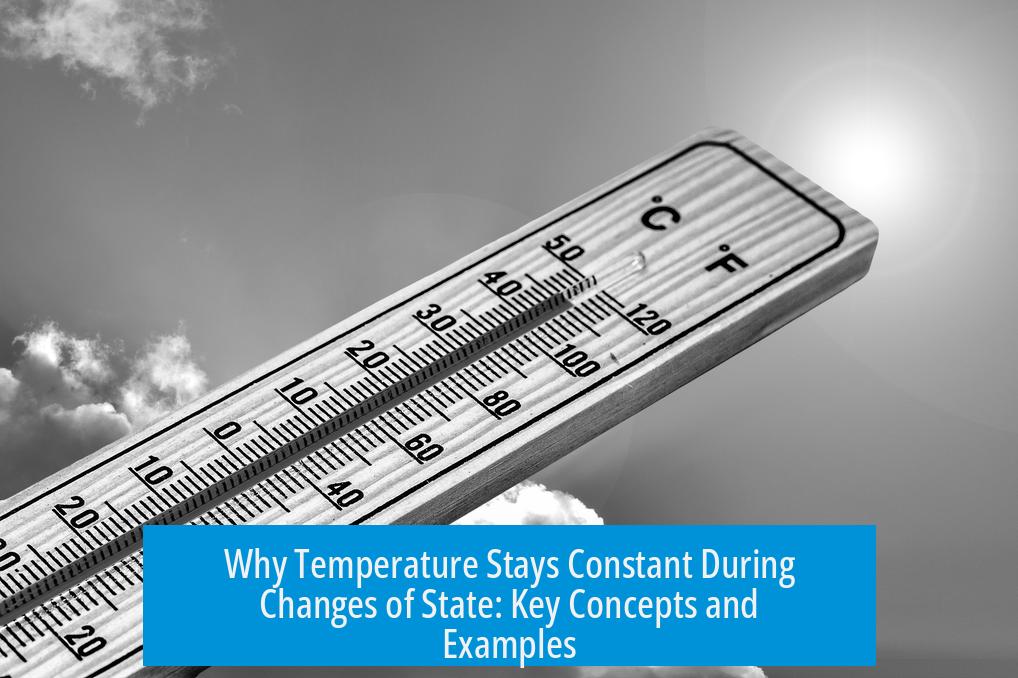Why Does the Temperature of a Substance Remain Constant During a Change of State?

The temperature of a substance remains constant during a change of state because the energy supplied to the system is employed solely to alter the molecular arrangement, breaking or forming intermolecular forces, rather than increasing the kinetic energy of particles that would raise the temperature.
Energy Goes Into Transformation, Not Heating
When a substance undergoes a phase change, the heat energy added does not raise its temperature. Instead, this energy breaks or forms the molecular bonds holding the substance in one phase. For example, during boiling, energy breaks the intermolecular forces binding liquid molecules together. This transformation requires energy without increasing particle speed.
- Heat energy is consumed to change phase.
- Kinetic energy of particles remains constant.
- Therefore, temperature stays stable despite energy input.
Phase Change Requires Energy to Alter Molecular Bonds
Temperature measures the average kinetic energy of particles. During a phase transition, heat energy targets the potential energy associated with molecular interactions, not kinetic energy. This means particles do not move faster; they reorganize. For example, ice melting involves breaking hydrogen bonds without heating the water beyond 0°C until completely melted.
Thermodynamic Relation Between Entropy, Heat, and Temperature

Thermodynamics explains this phenomenon through entropy (S), heat added (Q), and temperature (T) linked by the formula:
dS = dQ / T
During phase transitions, each increment of heat induces the same entropy increase to change the phase of a portion of the substance. Since the process happens at equilibrium, temperature remains constant throughout.
This means temperature cannot change without altering entropy differently or adding heat for kinetic energy, which does not occur in phase transitions. Thus, uniformity in the thermodynamic parameters ensures constant temperature.
Contrast with Heating Without Phase Change
Heating a substance without changing its state results in temperature increase because the added heat raises the particles’ kinetic energy. As particles become more “excited” with heat, entropy changes less per unit heat input, forcing temperature upward.
- Heat increases kinetic energy and temperature.
- Entropy change per heat unit decreases.
- Temperature rises continuously until phase change.
Conversely, during phase transitions, heat does not increase kinetic energy but goes into molecular rearrangement. Thus, temperature remains fixed.
Example: Freezing Water
When water freezes, it forms ice crystals near 0°C. Energy released does not cool the system immediately. Instead, it sustains the phase change by enabling molecules to arrange into a solid lattice.
Only when all water turns solid can the temperature decrease further below the freezing point. While both liquid and solid coexist, the system temperature stays constant at 0°C.
- Energy is released for crystal formation, not temperature drop.
- Temperature remains at the freezing point until complete solidification.
- Equilibrium between phases maintains consistent temperature.
Thermal Equilibrium and Phase Transition Temperature Independence
During a phase transition, two phases coexist in thermal equilibrium. Their temperatures equalize to a unique phase transition temperature, unaffected by the system’s total amount.
For instance, water boils at 100°C regardless of volume, even if only a single drop is boiling. This is because phase transition temperature depends on pressure and molecular interactions, not quantity.
Example: Boiling Water
When boiling water, temperature remains at 100°C under normal atmospheric pressure as liquid converts into vapor. The heat added breaks intermolecular forces instead of heating molecules faster.
Only after all the water has vaporized can the temperature of steam increase if heating continues. Pressure changes can also alter boiling points, but without such changes, the temperature stays constant during boiling.
- Liquid water temperature stays at 100°C during boiling.
- Heat energy breaks bonds for vapor formation.
- Post phase change, temperature can rise in steam.
Summary of Key Points
- Energy during phase changes alters molecular bonds, not particle speed.
- Temperature reflects kinetic energy; it stays constant as kinetic energy remains unchanged.
- Thermodynamics dictates phase transitions occur at fixed temperatures due to entropy and heat relations.
- Phase change temperatures are intrinsic properties, independent of system size.
- Examples: Water freezes and boils at constant temperatures as phases coexist in equilibrium.
Why does the temperature not rise during melting or boiling?
Energy added breaks or forms forces between molecules, not increasing their motion. This keeps the temperature steady while the phase changes.
How is entropy related to constant temperature in phase changes?
Each bit of heat changes the phase and increases entropy by the same amount. Since dS = dQ/T, temperature remains uniform during the process.
Why doesn’t temperature drop immediately when freezing starts?
At freezing point, energy is released forming crystals, not lowering temperature. The temperature stays constant until all liquid becomes solid.
What happens to temperature after all the liquid has vaporized?
Once the phase change finishes, added heat raises the temperature of the vapor. Before vaporization completes, temperature stays at boiling point.
Does the amount of substance affect phase change temperature?
No. Phase change temperatures depend on equilibrium, not quantity. Water boils at 100°C whether it’s a drop or a pot.





Leave a Comment